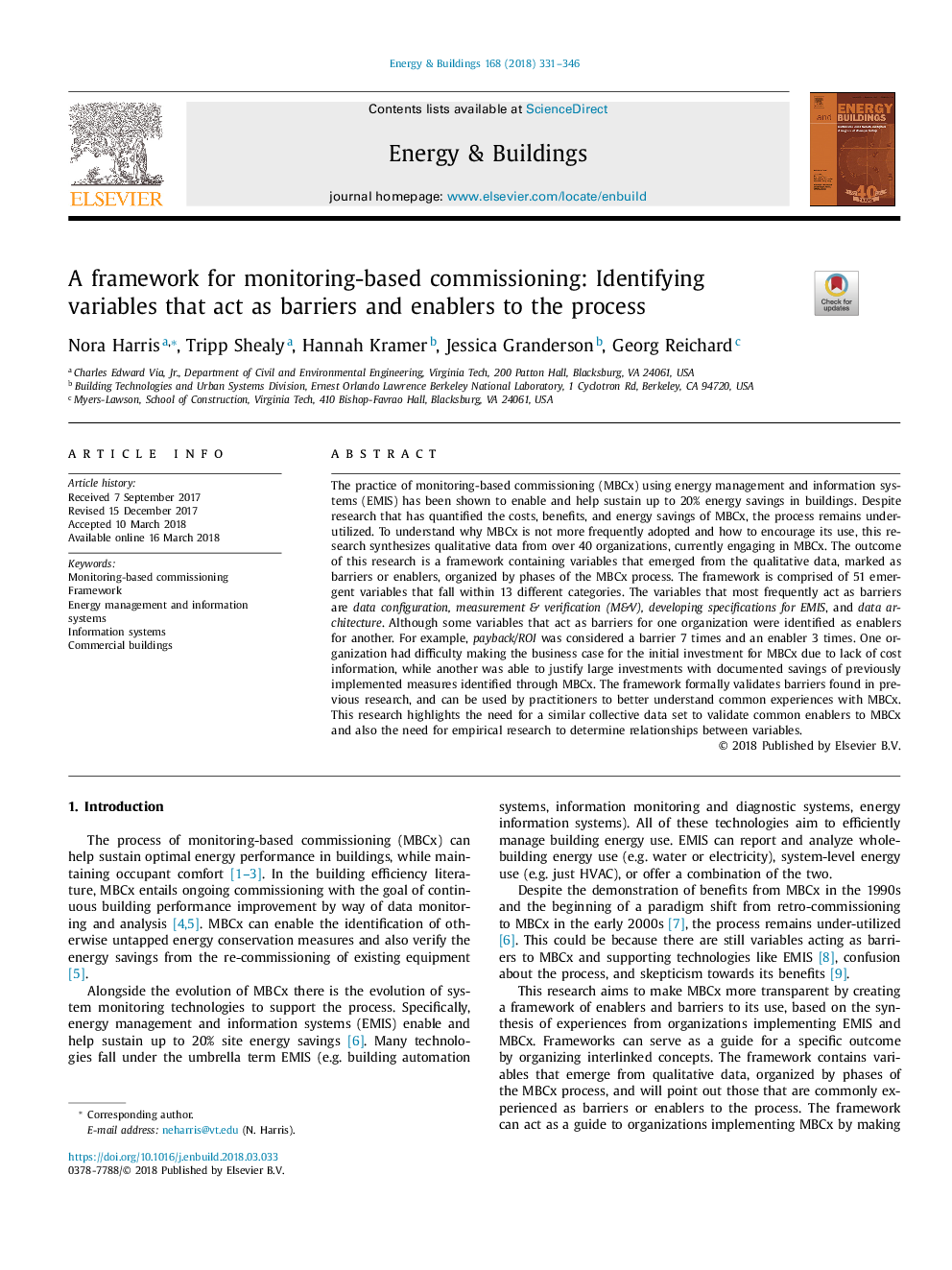ترجمه فارسی عنوان مقاله
چارچوب راه اندازی مبتنی بر نظارت: شناسایی متغیرهایی که به عنوان موانع و توانمندسازان این روند عمل می کنند
عنوان انگلیسی
A framework for monitoring-based commissioning: Identifying variables that act as barriers and enablers to the process
| کد مقاله | سال انتشار | تعداد صفحات مقاله انگلیسی |
|---|---|---|
| 108238 | 2018 | 16 صفحه PDF |
منبع

Publisher : Elsevier - Science Direct (الزویر - ساینس دایرکت)
Journal : Energy and Buildings, Volume 168, 1 June 2018, Pages 331-346
ترجمه کلمات کلیدی
راه اندازی مبتنی بر نظارت، چارچوب سیستم های مدیریت انرژی و اطلاعات، سیستم های اطلاعاتی، ساختمان تجاری،
کلمات کلیدی انگلیسی
Monitoring-based commissioning; Framework; Energy management and information systems; Information systems; Commercial buildings;

